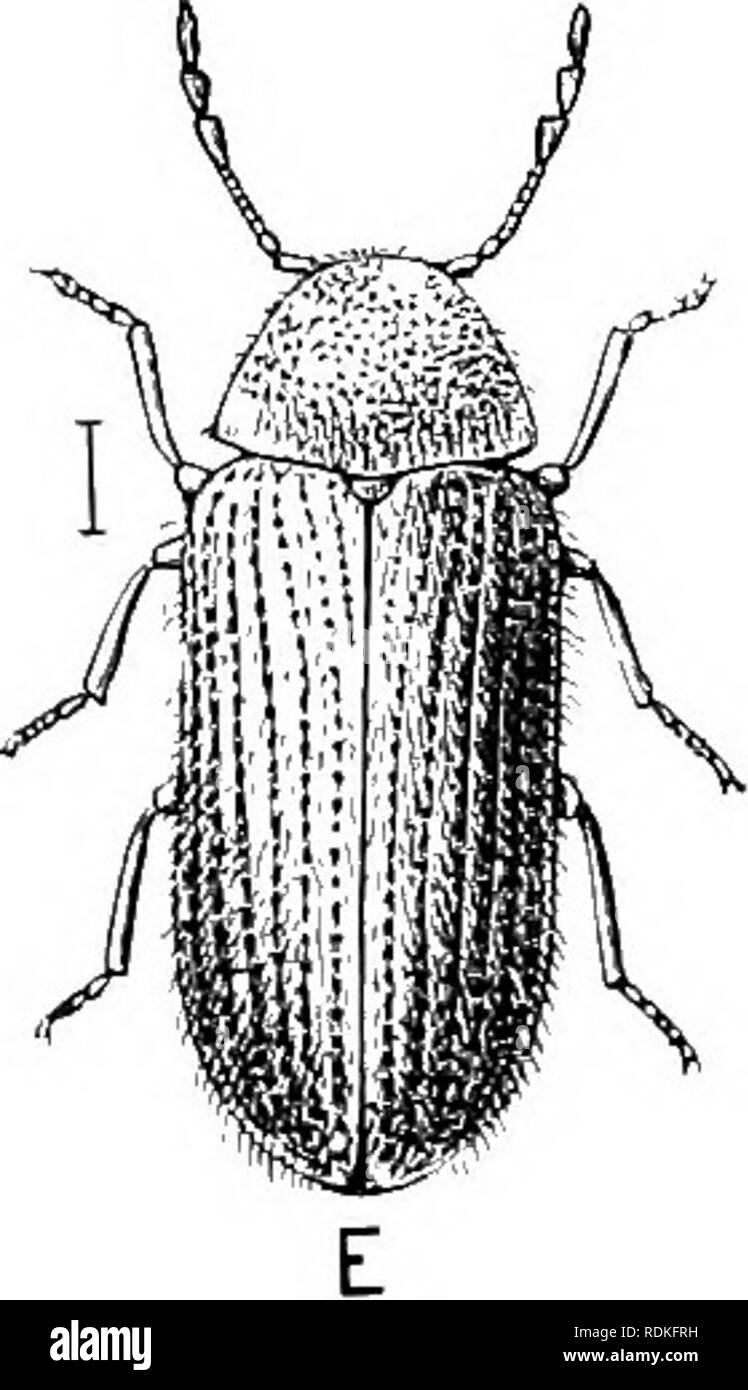. The Cambridge natural history. Zoology. POLYMORPHA—PTINIDAE 247 present imperfect state of knowledge ^ it is not necessary to treat them separatel3^ Ptinidae are sometimes very destructive to dried animal matter, and attack specimens in museums; Anobiides bore into wood, and apparently emerge as perfect Insects only for a very brief period; Atwlium ()Sito- drejxi) paniceum is, however, by no means restricted in its tastes; it must possess extraordinary powers of digestion, as we have known it to pass several consecu- tive generations on a diet of opium; it has also been reported to thrive on

Image details
Contributor:
The Book Worm / Alamy Stock PhotoImage ID:
RDKFRHFile size:
7.2 MB (238.1 KB Compressed download)Releases:
Model - no | Property - noDo I need a release?Dimensions:
1200 x 2083 px | 20.3 x 35.3 cm | 8 x 13.9 inches | 150dpiMore information:
This image is a public domain image, which means either that copyright has expired in the image or the copyright holder has waived their copyright. Alamy charges you a fee for access to the high resolution copy of the image.
This image could have imperfections as it’s either historical or reportage.
. The Cambridge natural history. Zoology. POLYMORPHA—PTINIDAE 247 present imperfect state of knowledge ^ it is not necessary to treat them separatel3^ Ptinidae are sometimes very destructive to dried animal matter, and attack specimens in museums; Anobiides bore into wood, and apparently emerge as perfect Insects only for a very brief period; Atwlium ()Sito- drejxi) paniceum is, however, by no means restricted in its tastes; it must possess extraordinary powers of digestion, as we have known it to pass several consecu- tive generations on a diet of opium; it has also been reported to thrive on tablets of dried compressed meat; in India it is said to disintegrate books; a more usual food of the Insect is, how- ever, hard biscuits ; weevilly biscuits are known to every sailor, and the so-called " weevil" is usually the larva of A. paniceum (Fig. 127, B). In the case of this Insect we have not detected more than one spiracle (situate on the first thoracic segment) ; the other known larvae of Anobiides are said to possess eight abdominal spiracles. The skeleton in some. Fig. 126.—"Biscuit-weevil.' Anobium paniceum.. Please note that these images are extracted from scanned page images that may have been digitally enhanced for readability - coloration and appearance of these illustrations may not perfectly resemble the original work.. Harmer, S. F. (Sidney Frederic), Sir, 1862- ed; Shipley, A. E. (Arthur Everett), Sir, 1861-1927. ed. [London, Macmillan and Co. , Limited; New York, The Macmillan Company